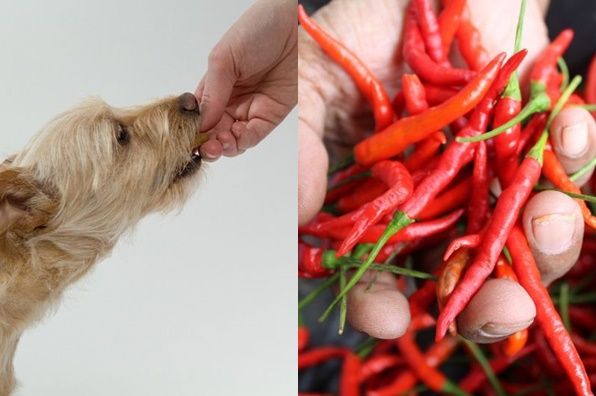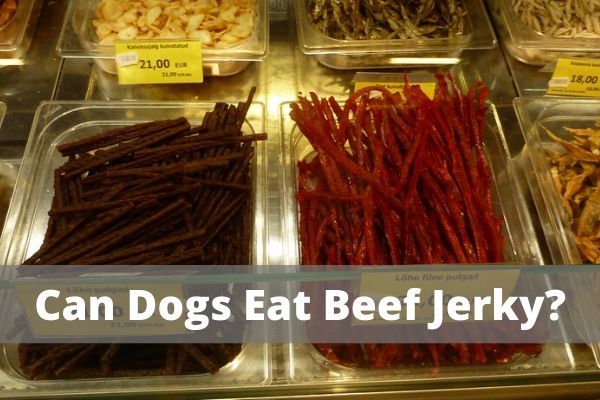Many dual pet parents have questions about providing a healthy, nutritional diet for their fur babies, such as “Can dogs eat dry cat food?” or is dry cat food safe for my dog? Vets say NO, and recommend that you do not allow your dog to eat dry cat food, as there are risks of numerous health conditions. Consuming dry cat food can cause adverse side effects such as obesity, malnutrition, and digestive distress.
Keep reading to find out why it’s not safe for your pets to consume each other’s food.
Can Dogs Eat Dry Cat Food?

If your household consists of cats and dogs, you’re probably well versed in the complications that arise during feeding time. No matter how much food you provide for your puppy, he still goes after the cat food. Experts say this could be due to the fact that cat food contains a higher protein count. Your puppy is attracted to the yummy (to them) smell.
Cat Food Versus Dog Food: What are the Differences?
If you look at the ingredients on a bag of dog food, you’ll find that the ingredients are probably pretty similar to some of your favorite dinner recipes. Common foods you’ll find in your fur baby’s dinner include:
- Proteins
- Carbohydrates
- Fruits
- Veggies
- Supplements
However, if you examine your cat’s dry food, you’ll notice that the primary ingredient is going to be protein. There will be very little veggies included. This is because cats cannot convert essential nutrients from their food into what their bodies need, such as taurine, Vitamin A, and an amino acid called Arachidonic acid. Therefore, many products will have these nutrients mixed into their food. This is good for kitties, but not so much for puppies of any age.
These additives can be harmful to your dog. They don’t need them, as they can reap the natural benefits of the things they eat, just like humans. This means they don’t need supplements. When they consume them through cat food, it can cause multiple problems. Some issues might be simple, like diarrhea or vomiting. While others might be fatal.
Dry Cat Food is Made for Omnivores
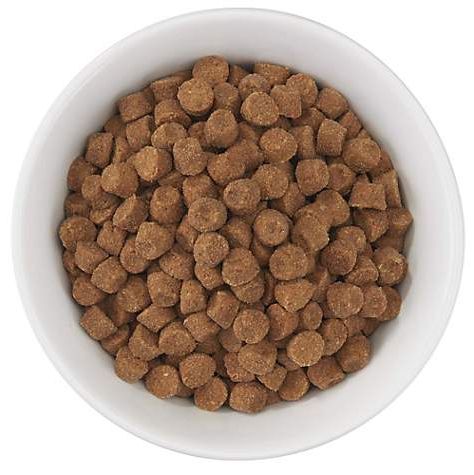
Because cats are carnivores, they require meat as the majority of their diet. Despite the myths you hear on TV, your dog isn’t solely a carnivore. Dogs are actually omnivores, meaning they require a balanced diet of protein, vegetables, carbs, and grains to be healthy.
Domesticated dogs have adapted throughout hundreds of years to be able to digest starchy diets. However, wolves, which are still almost genetically identical to many dog breeds, do not have this ability. Because dogs can get their nutrients through protein and other ingredients, they only require 8.5% fat content in their food. Whereas cats require 9% fats.
Protein Content in Dry Cat Food
Dry cat food contains higher amounts of protein because it’s the main component of their diet. It’s recommended that cats get 26%. For dogs, it’s only 18%. Cat food will have between 30% to 50% protein. Canned food has a higher percentage. Although dogs need higher protein when they’re using up a lot of energy, too much can be bad for them.
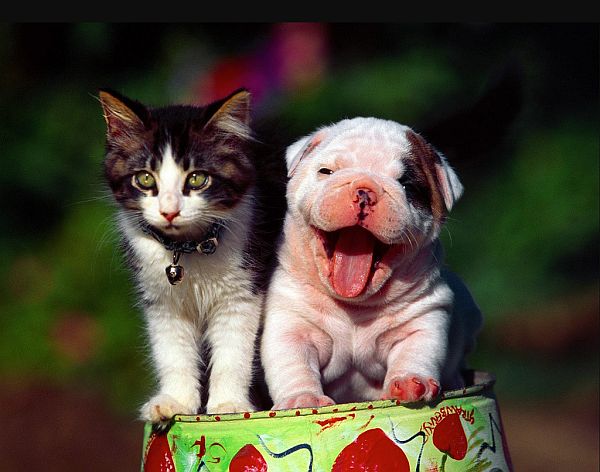
Too much protein in your dog’s diet can cause him to become obese. Especially from cat food, as it’s also high in calories compared to dog food. Obesity causes its own complications with your dog’s health. This condition has been linked to increased rates of cardiovascular disease and diabetes. Your dog’s kidneys and liver can also be damaged by too much protein.
Dangers of Dry Cat Food for Dogs
Dogs can naturally produce nutrients like taurine, Vitamin A, and arachidonic acid, so there’s no need to add them to their food. Cat food has these nutrients added in since cats can’t produce them on their own. This can lead your dog to have too much of certain nutrients, which can be dangerous for him.
Cat Food Includes Vitamin A
Cat food is made with Vitamin A, which is essential for cats and dogs. However, dogs can make their own so there’s little need to provide more. Most store-bought dog foods will contain slight amounts of Vitamin A. This comes from dark orange fruits and veggies, as well as eggs, which are all high in B-Carotene (Vitamin A).
Although the trace amounts might not be enough to equal the recommended serving of 5,000 IU of Vitamin A for each kilogram of food. Look for a food that includes ingredients like liver, fish liver oil, egg yolks, sweet potatoes, carrots, and kale. If necessary, you can supplement this with a multivitamin like this. However, it is advised not to provide too much as this can lead to toxicity.
A few signs of toxicity will be:
- Appetite loss
- Bone spurs
- Constipation
Vitamin A is needed to keep your pet’s skin, fur, muscles, and nerves working properly. If you’re worried your dog might be suffering from a Vitamin A deficiency, pay attention to their fur. One of the first signs you’ll notice is dry skin and a dull coat. You might also notice night blindness and weakness from deteriorated muscles.
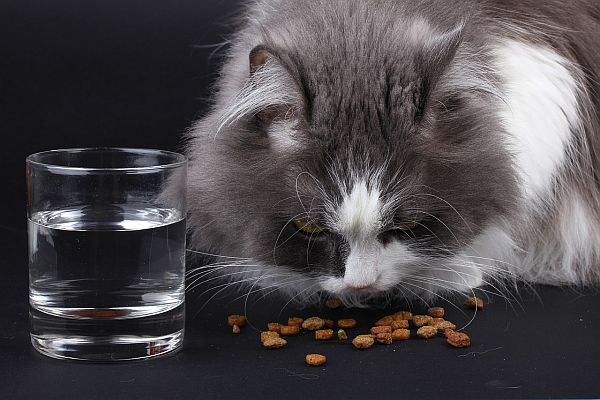
Cat Food Has Taurine
Taurine is an important amino acid that helps to keep your dog’s heart functioning properly. But that’s not all. This amino acid also affects your dog’s eyes and immune system. If you feel like your pet isn’t getting enough taurine, get a consult with a veterinarian. They may recommend you increase (or add) more protein to your pet’s meals.
The brand of dog food you use might be a good enough source of taurine. But not all brands use this amino acid due to the presence of other sulfur amino acids like cysteine and methionine, both of which convert to taurine in the body. If you’re serving your pet dog food that contains more plants and grains than meat protein, your dog might not be getting enough taurine to remain healthy.
Lack of taurine can lead to dilated cardiomyopathy (DCM), which is dangerous heart disease. Although dogs can naturally produce taurine, larger breeds like Golden Retrievers, spaniels, and Newfoundlands, often convert at slower rates, which can lead to deficiencies. However, too much taurine can be toxic to your dog. Since cat food will have higher rates, it’s best to keep your dog out of her kitty sibling’s food.
Cat Food Contains Arachidonic Acid
Arachidonic acid is an Omega-6, which dogs produce naturally. Omega-6 fatty acids are an important part of your dog’s diet. But it should be equally balanced with Omega-3 amino acids. The recommended ratio is 4 Omega-6 to 1 Omega-3. Omegas and arachidonic acid are considered essential fatty acids (EFA).
This means that your dog requires these acids if they want to remain healthy. EFAs keep your heart and reproductive system healthy, as well as to protect and replace liver cells. They are also what keeps your dog’s skin and coat healthy, and their joints strong. An imbalance of Omega-6 to Omega-1 can lead to:
- skin/coat diseases
- Digestive problems
- Cardiovascular disease
- Degenerative eye disease
- Allergies
- Renal problems
Many store-bought dog foods claim to have a ratio of 20 to 1 essential fatty acids. Or you might see a ratio of 50 to 1 or more. These can cause an Omega-3 deficiency because a primary ingredient is usually corn, which is a good source of Omega-6. Some people like to take a more holistic approach and use natural supplements like fish oil to keep their dogs Omegas in balance. Whether you do this is up to you and your veterinarian.
Separate Your Pets During Dinner
If your dog has a habit of getting into the kitty food, try these tips. Keep the cat food locked up in airtight containers, out of your dog’s reach. When it’s dinner time, feed your pets at different times. Put your dog outside while the cat’s eating, or wait until it’s time for your dog’s walk.
Some experts recommend putting your cat’s food at a higher level than the dog, such as on top of a cat tree like this one. This allows your cat to have the freedom to eat at their own pace, without worrying that the dog will eat it first. If you don’t have the space for a cat tree, you can also use time delay feeders, which issue out a set amount of food at scheduled times
Cat food is not safe for dogs
Don’t panic if you catch your dog eating cat food once or twice. This won’t be enough to hurt her. However, don’t let it become a habit. Cats and dogs require different diets. The supplements you’re feeding your cat can be harmful to your dog. Not only do you risk your dog becoming malnourished, but your pet may also suffer gastrointestinal upset that leads to digestive tract damage, obesity, and pancreatitis, which can be fatal. Protect your canine children by keeping the cat food away from them.

Kassidy Shepperd is the editor in chief for Canine-Prime.com. She is is a dog lover/trainer, a freelance writer and a volunteer at many pet rescue and shelter centers. Kassidy is based in Colorado and regularly writes for dog related magazines and blogs.

